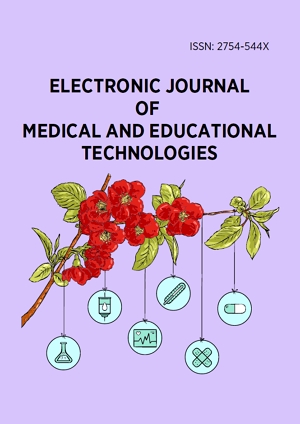Electronic Journal of Medical and Educational Technologies
Electronic Journal of Medical and Educational Technologies (EJMETS) is a double-blinded peer-reviewed open-access journal which publishes original articles, and review articles in all domains of general medicine, medical technology and medical education.
Current Issue
Volume 18, Issue 1, March 2025
(In Progress)
Review Article
Factors affecting medical student attrition: A review of literature from the decade before COVID-19
ELECTR J MED ED TE, Volume 18, Issue 1, March 2025, Article No: em2501
https://doi.org/10.29333/ejmets/15904Original Article
Measurement of emotional intelligence among interns of the department of internal medicine at Damascus University: A cross-sectional study
ELECTR J MED ED TE, Volume 18, Issue 1, March 2025, Article No: em2502
https://doi.org/10.29333/ejmets/16055
